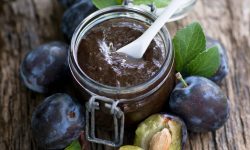As summer comes to an end, we are stocking up on all the delicious summer…
So you’ve scored a bunch of great summer fruit, but you don’t feel like turning on the burner to can it? Try freezing instead! Follow these simple tips below to make sure your sweet treats survive the chill. To get the best results, you’ll want to freeze your fruit when it’s freshest. Make sure that your fruit is in top condition, and get it into the freezer as quickly as you can.
You’ll also want to make sure that you’ve got some space in your freezer before you start. It’s best to freeze your produce as quickly as possible, as this minimizes the chance of freezer burn and mushiness. A few hours before you start the process, turn your freezer to its lowest setting to speed up the process. Also, try to avoid crowding your freezer while the fruit is freezing.
PREPARING YOUR FRUIT
A little bit of preparation goes a long way to keeping your fruit in top condition. Wash your fruit, and remove any damaged pieces. Dry your fruit as much as you can.
For small berries: berries like blueberries, blackberries, currants, raspberries, and cranberries can be frozen whole.
For strawberries: you can freeze strawberries whole, but they’re improved greatly by a bit of sugar. Slice your berries, toss them in sugar, and stir gently.
For fruit with a pit: cherries, peaches, nectarines, and apricots should be pitted.
For fruit that goes brown: apples, peaches, nectarines, and apricots will go brown if left to their own devices. There’s a simple solution. Make a water bath of one quart water plus one tablespoon of lemon juice or apple cider vinegar. Core your fruit, peel it if applicable, slice it in manageable pieces, then dip in the water bath, and dry.
FREEZING YOUR FRUIT
Once your fruit is prepared, spread it out on a single layer on a cookie sheet to freeze. Once it’s frozen, put it into a freezer bag or plastic container, filling as full as possible to eliminate air. Make sure to label your containers—fruit is best used within 12 months.




